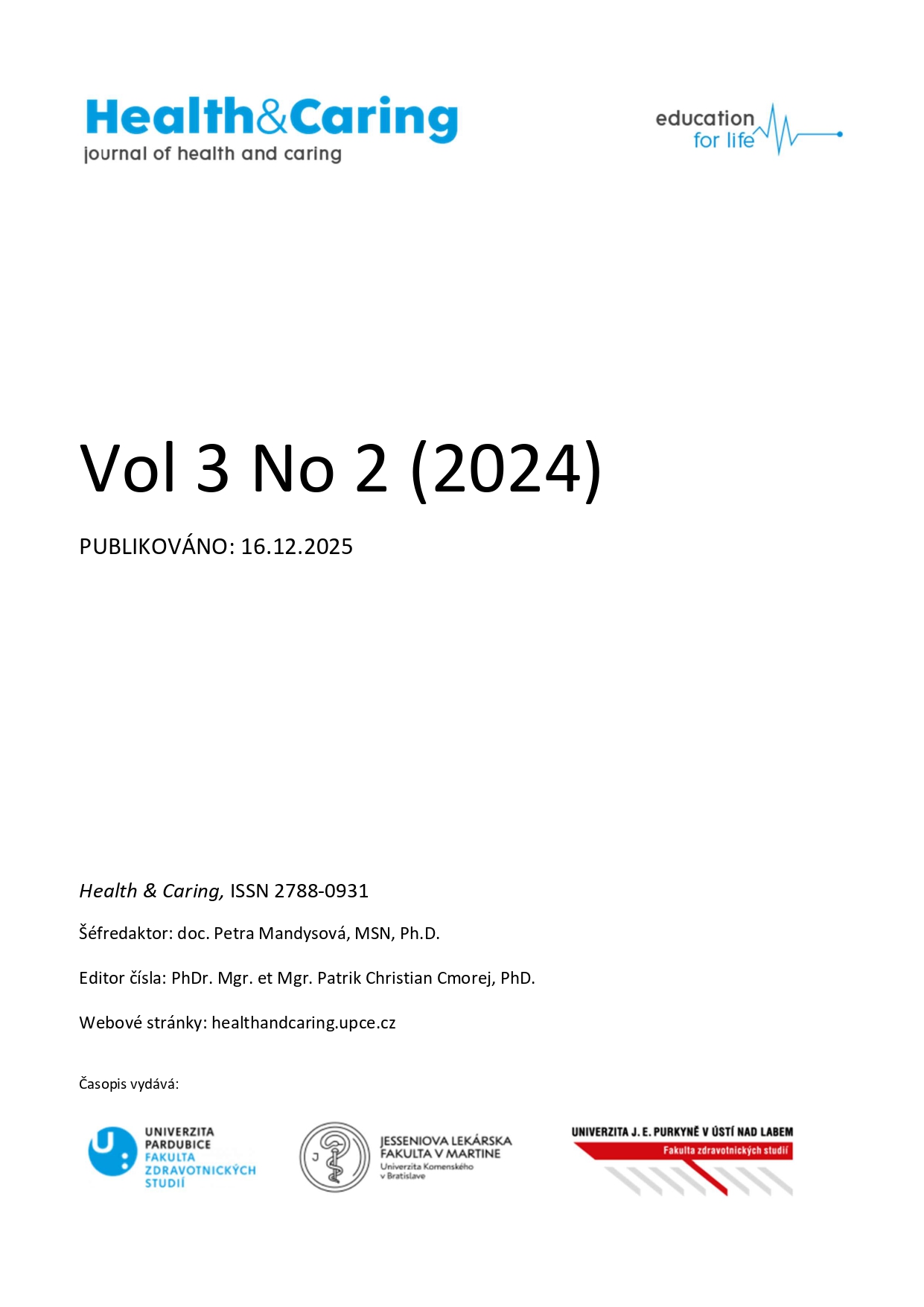Job Satisfaction Audit in Hospital: Qalitative Case Study
DOI:
https://doi.org/10.46585/hc.2024.2.2569Keywords:
job satisfaction; well-being; quality careAbstract
Introduction: The shortage of healthcare professionals, their turnover, and the risk of burnout are critical issues in healthcare organizations, impacting the quality and safety of care. This study, based on contractual research, aimed to identify factors influencing employee satisfaction in new hospital facilities.
Aim: This article presents an audit of job satisfaction using the JD-R model in a healthcare facility to improve employee stability and well-being, thereby enhancing care quality and safety. It aims to showcase a methodological approach applicable in healthcare management and other services.
Method: The extended JD-R model (Job Demands-Resources model) was used as the theoretical framework. The analysis of negative and positive factors that influence job satisfaction was based on data collected from anonymous semi-structured interviews. Thematic and narrative analysis, as well as the study of internal documents, was also used and evidence-based results were presented in a final synthesis.
Results: The methodological approach delivered valuable findings for improving care. Key positive factors influencing job satisfaction included prospects of permanent employment and salary levels. Significant negative factors were concerns about personal safety and dissatisfaction with medical staffing.
Conclusion: The study’s final report, presented to top management, outlined the positive and negative factors affecting job satisfaction and well-being. Management expressed willingness to act on the findings and provided specific examples during the results presentation. While the results’ transferability is limited, the methodological approach is inspiring and applicable in healthcare organizations.
Downloads
References
Ahmed, I. (2017). Staff well-being in high-risk operating room environment: Definition, facilitators, stressors, leadership, and team-working - A case-study from a large teaching hospital. International Journal of Healthcare Management, 1-17. https://doi.org/10.1080/20479700.2017.1298228
Aiken, L. H. (2002). Hospital nurse staffing and patient mortality, nurse burnout, and job dissatisfaction. JAMA, 288(16), 1987-1993. https://doi.org/10.1001/jama.288.16.1987
Aiken, L. H., et al. (2023). Physician and nurse well-being and preferred interventions to address burnout in hospital practice. JAMA Health Forum, 4(7), e231809. https://doi.org/10.1001/jamahealthforum.2023.1809
AONE American Organization of Nurse Executives. (2015). AONE nurse executive competencies. Chicago, IL: Author. Available from: http://www.aone.org/resources/nurse-leader-competencies.shtml
Arnold, K. A., Turner, N., Barling, J., Kelloway, E. K., & McKee, M. C. (2007). Transformational leadership and psychological well-being: The mediating role of meaningful work. Journal of Occupational Health Psychology, 12(3), 193-203. https://doi.org/10.1037/1076-8998.12.3.193
Berlanda, S., de Cordova, F., Fraizzoli, M., & Pedrazza, M. (2020). Risk and protective factors of well-being among healthcare staff: A thematic analysis. International Journal of Environmental Research and Public Health, 17(18), 6651. https://doi.org/10.3390/ijerph17186651
Blagg, R., & Petty, S. (2015). Sustainable staff well-being within older adult mental health. Mental Health Review Journal, 20(2), 92-104. https://doi.org/10.1108/MHRJ-08-2014-0027
Boies, K., Fiset, J., & Gill, H. (2015). Communication and trust are key: Unlocking the relationship between leadership and team performance and creativity. Leadership Quarterly. https://doi.org/10.1016/j.leaqua.2015.07.007
Braun, V., & Clarke, V. (2006). Using thematic analysis in psychology. Qualitative Research in Psychology, 3(2), 77-101. https://doi.org/10.1191/1478088706qp063oa
Braun, V., & Clarke, V. (2021). Can I use TA? Should I use TA? Should I not use TA? Comparing reflexive thematic analysis and other pattern-based qualitative analytic approaches. Counselling & Psychotherapy Research, 21(1), 37-47. https://doi.org/10.1002/capr.12360
Braun, V., & Clarke, V. (2023). Is thematic analysis used well in health psychology? A critical review of published research, with recommendations for quality practice and reporting. Health Psychology Review, 17(4), 695-718. https://doi.org/10.1080/17437199.2022.2161594
Brown, D. J., Arnold, R., Fletcher, D., & Standage, M. (2017). Human thriving. European Psychologist, 22(3), 167-179. https://doi.org/10.1027/1016-9040/a000294
Gauche, C., de Beer, L. T., & Brink, L. (2017). Exploring demands from the perspective of employees identified as being at risk of burnout. International Journal of Qualitative Studies on Health and Well-being, 12(1), 1361783. https://doi.org/10.1080/17482631.2017.1361783
Gerrish, K., & Lacey, A. (2009). The research process in nursing. Oxford: Blackwell Publishing. ISBN 978-1-4051-3013-4
Hájek, M., Havlík, M., & Nekvapil, J. (2012). Narrative analysis in sociological research: Main approaches and a unifying frame. Sociologický časopis, 48(2), 199-224. https://doi.org/10.13060/00380288.2012.48.2.01
Hall, L. H., Johnson, J., Watt, I., Tsipa, A., & O’Connor, D. B. (2016). Healthcare staff wellbeing, burnout, and patient safety: A systematic review. PLOS ONE, 11(7), e0159015. https://doi.org/10.1371/journal.pone.0159015
IHF International Hospital Federation. (2023). Global healthcare leadership competency model. Available from: https://ihf-fih.org/what-we-do/global-healthcare-leadership-competency-model/
Moloney, W., Fieldes, J., & Jacobs, S. (2020). An integrative review of how healthcare organizations can support hospital nurses to thrive at work. International Journal of Environmental Research and Public Health, 17(23), 8757. https://doi.org/10.3390/ijerph17238757
Oliveira, I. B. de, Peres, A. M., Almeida Bastos, R., Casey, M., Timmins, F., & Malak, M. (2023). Managerial competencies engaged in innovative actions in primary health care: A qualitative study of Brazilian nurses. Journal of Nursing Management, 2023, 8746398. https://doi.org/10.1155/2023/8746398
Pahlevan Sharif, S., Ahadzadeh, A. S., & Sharif Nia, H. (2018). Mediating role of psychological well-being in the relationship between organizational support and nurses’ outcomes: A cross-sectional study. Journal of Advanced Nursing, 74(4), 887-899. https://doi.org/10.1111/jan.13501
Pihlainen, V., Kivinen, T., & Lammintakanen, J. (2016). Management and leadership competence in hospitals: A systematic literature review. Leadership in Health Services, 29(1), 95-110. https://search.proquest.com/docview/1756462461?accountid=17239
Sharif, S. P., Ahadzadeh, A. S., & Nia, H. S. (2018). Mediating role of psychological well-being in the relationship between organizational support and nurses’ outcomes: A cross-sectional study. Journal of Advanced Nursing, 74(4), 887-899. https://doi.org/10.1111/jan.13501
Smith, B. (2016). Narrative analysis. In E. Lyons & A. Coyle (Eds.), Analysing qualitative data in psychology (2nd ed., pp. 202-221). London: Sage. ISBN 978-1-4462-7374-6
Spence Laschinger, H. K., & Finegan, J. (2005). Empowering nurses for work engagement and health in hospital settings. JONA: The Journal of Nursing Administration, 35(10), 439-449. https://doi.org/10.1097/00005110-200510000-00005
Tummers, L. G., & Bakker, A. B. (2021). Leadership and job demands-resources theory: A systematic review. Frontiers in Psychology, 12, 722080. https://doi.org/10.3389/fpsyg.2021.722080
Downloads
Published
How to Cite
Issue
Section
License
Copyright (c) 2024 Jana Holá, Adéla Michková, Monika Kopecká

This work is licensed under a Creative Commons Attribution-NonCommercial 4.0 International License.
Accepted 2024-12-04
Published 2024-12-16










